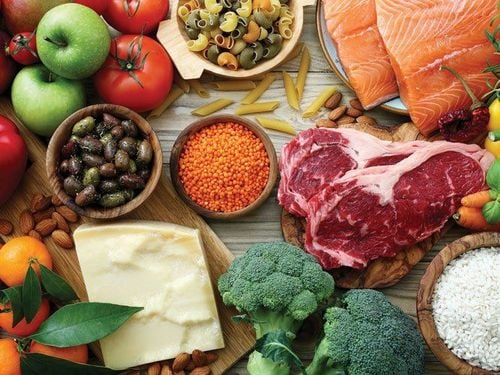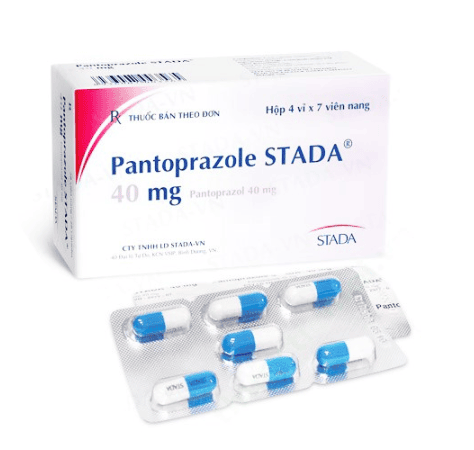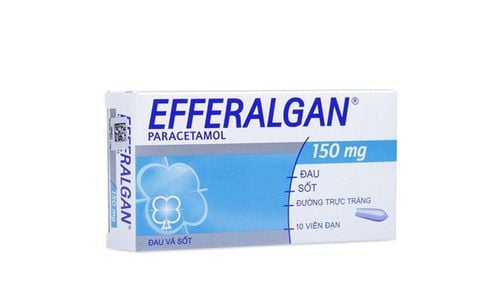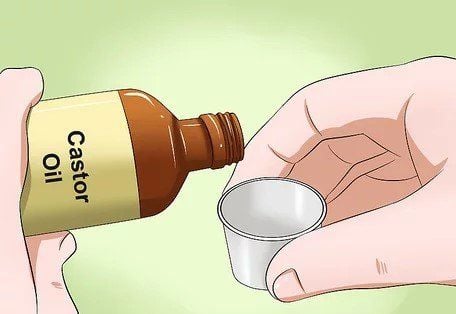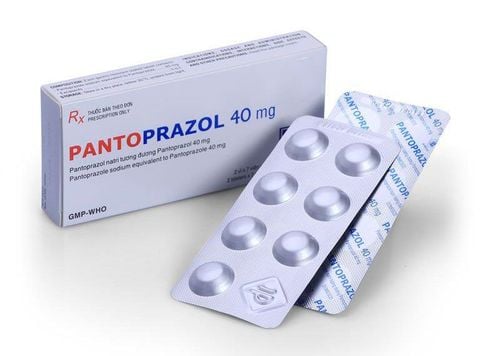This is an automatically translated article.
Gastritis is a common disease, leading in the digestive tract diseases. Choosing the right food and staying away from foods that harm the stomach is one of the effective ways to treat the disease.
1. Stomach-damaging foods that sick people need to avoid
Gastritis is a common disease, leading in the digestive tract diseases. Choosing the right foods and dishes is one of the measures to effectively treat diseases that cause stomach pain. Therefore, stomach pain should not eat is always a question of many people. The following are foods that harm the stomach that patients need to avoid:
Foods that cause damage to the stomach lining: Spicy spices such as chili, pepper, garlic; sour spices such as lemon, vinegar; stimulants such as alcohol, tobacco, coffee, solid tea; carbonated soft drinks. These foods will stimulate the stomach lining to produce more acid, which can cause stomach upset and pain. Hard foods such as old, fibrous vegetables, cartilage, and tendons will cause rubbing of the stomach lining. Fatty foods like making it difficult for the stomach to digest. Raw, cold foods are stomach-damaging foods. Tasty foods such as salted meat, salted fish, roasted and grilled meat, and greasy foods such as fried, fried or sautéed make the stomach work harder, making it harder for the stomach to digest food. Prepared dishes such as cold cuts, hams, sausages, sausages, concentrated fish gravies and sauces. Cucumber, garlic vinegar, and salted onions contain many spicy and sour spices that irritate the stomach lining, leading to symptoms of bloating, abdominal pain, gastritis, and even stomach ulcers. Fruits such as oranges, lemons, guava, pineapple, toad, papaya will increase acid secretion in the stomach. Lemon juice can cause diarrhea in people with intestinal diseases, stomach pain. Acidic orange juice can upset the digestive tract and irritate sensitive nerves, the stomach and intestines contain a lot of acid that can cause abdominal pain. Tomatoes have a strong acidity that stimulates the stomach to produce more gastric juice, increasing the acidity of the stomach. Therefore, tomatoes are one of the foods that harm the stomach, causing heartburn and stomach upset.

Thức ăn sống, lạnh là những món ăn hại dạ dày
2. Foods that are good for the stomach
The following are foods that are good for the stomach:
Foods that absorb stomach acid: Bread, cakes, cookies. Foods that reduce acid secretion and relieve stomach pain: Starchy foods such as rice, sticky rice, sticky rice, porridge, sweet potatoes, boiled potatoes. Foods that support the treatment of stomach pain: Young leafy vegetables such as cabbage, bean sprouts provide fiber and abundant vitamin K, which helps to increase blood circulation to the stomach, stimulate the digestive system. digestion, protect gastric mucosa and effectively improve stomach pain. Foods that help ulcers heal quickly (eg people with stomach ulcers): Foods rich in protein, zinc, calcium (meat, fish, shrimp...). Foods that improve vitamin and mineral deficiencies due to poor digestion and absorption in people with chronic stomach pain: Cereals, orange-red fruits, dark green vegetables , ... are rich in magnesium, iron, zinc and vitamins A, B, and D. Banana is an easy food to eat, has a balancing and stabilizing effect on the digestive system thanks to the active ingredient pectin in bananas. Bananas can also neutralize acid in the stomach to help reduce swelling, ulcers of the stomach - duodenum and intestinal tract. To neutralize stomach acid as well as protect the stomach lining, it is best to eat ripe bananas after eating. Papaya: Eating ripe papaya is good for the stomach, creating a pleasant feeling, alleviating the symptoms of bloating and indigestion and stimulating the digestive tract. Papaya contains papain, an enzyme capable of breaking down proteins in food and helping to limit the invasion of viruses and bacteria that cause disease. Therefore, eating ripe papaya will benefit the digestive system, support the treatment of stomach pain, significantly reduce indigestion, and help the body easily digest and absorb nutrients. Yogurt: Although yogurt has a mild sour taste, the acidity in yogurt is very low compared to the amount of acid in gastric juice. Therefore, people with stomach pain do not need to worry when eating yogurt. In contrast, the fermentable bacteria present in yogurt will adhere to the gastrointestinal mucosa, stimulating the secretion of natural defenses that help strengthen local immunity. In addition, lactic acid is metabolized in yogurt, which inhibits the growth of Helicobacter pylori bacteria (a common cause of peptic ulcers). Therefore, people with stomach pain eating yogurt will be very beneficial, but must eat when full, not when hungry. Ginger: Ginger is a popular spice and is also used as a simple, safe remedy for stomach upset, indigestion, bloating, nausea and vomiting. Ginger contains substances such as oleoresin and terpenes that have a very good antiseptic, analgesic and anti-inflammatory effect. Fresh ginger can be used directly as eating ginger candies, drinking ginger tea or cooked with dishes to use as an active supplement. Either way, ginger can be used in any form. However, it should be noted that stomach pain should not be treated by overusing ginger, because it can cause heartburn, diarrhea, even prolonged stomach pain. Honey: A very nutritious food, providing an abundant source of energy as well as a variety of mineral and antioxidant components. Despite its high content of nutrients, honey is easy to digest, causing less bloating and gas. Therefore, honey is often used to supplement the necessary micronutrients, to limit weight loss and weakness in patients with chronic stomach pain. In addition to its dense texture, smooth consistency and high stickiness, honey also has the ability to create a protective film on the lining of the esophagus, stomach and duodenum. Sugars such as glucose, fructose, maltose and sucrose in honey have the effect of reducing the acidity of gastric juice, helping to protect and prevent inflammation and ulceration of the gastrointestinal mucosa. From there, it will help relieve stomach pain and some other accompanying symptoms such as nausea, vomiting, belching, heartburn and burning in the epigastrium. Besides, honey also contains a protid, defensin-1, which can inhibit viruses, bacteria and fungi from growing inside the stomach and digestive tract.

Dưa cà, dấm tỏi là những món ăn hại dạ dày
Turmeric: A folk medicine that supports the treatment of many health problems, including diseases related to the digestive system. Curcumin is an active ingredient in turmeric, which soothes stomach pain and speeds up the healing of ulcers. However, because curcumin is very difficult to dissolve in water and the absorption is not high, it takes a lot of turmeric for a long time to achieve the desired results. Licorice is a popular remedy for indigestion and helps prevent stomach ulcers. However, in licorice contains glycyrrhizin (DGL) which is a natural active ingredient that has the risk of causing some health problems if consumed in large quantities such as increased blood pressure, electrolyte imbalance, decreased concentration. blood potassium. Therefore, only licorice preparations that do not contain glycyrrhizin should be used to relieve pain and indigestion caused by stomach ulcers.
3. Foods that are good for the stomach
Besides choosing foods that are good for the stomach, the way of processing to create dishes that are easy to digest and absorb, suitable for stomach pain also plays an equally important role. Here are the foods that are good for the stomach:
Porridge, soups such as chicken porridge, minced pork porridge; Fish porridge or seafood porridge (shrimp porridge, clam porridge, oyster porridge) is rich in zinc to help ulcers heal quickly; Cabbage chicken soup, green bean pumpkin soup, beef soup cooked with carrots and potatoes served with bread. Porridge and soup are foods that are both nutritious and easy to digest, easy to absorb, helping the stomach do not need to contract much, thereby relieving stomach pain. Bread is a suitable choice for people with gastritis. Bread with the main ingredient of starch will help absorb all the excess gastric acid in the stomach. Bread can be eaten with eggs, both rich in protein and neutralizing acids, helping to protect the stomach lining. Milk contains many nutrients, rich in protein and vitamins, neutralizing stomach acid, especially lactic acid, which is beneficial for the intestines. However, it should be noted that only drink milk after having a full meal ̧ absolutely do not drink fresh milk on an empty stomach because it will cause the stomach to contract more leading to spasms. Drinking a cup of fresh milk at about 1 hour after breakfast is an appropriate time to help nourish the body. Fruit smoothies (papaya, avocado, watermelon) and vegetable juices (cabbage, bean sprouts, carrots) provide vitamins and minerals that help heal ulcers. When gastritis occurs, in addition to pain, vomiting and diarrhea may occur, leading to dehydration and electrolytes. Mild dehydration and electrolytes can usually be reversed by drinking plenty of mineral water. Alternatively, tea is also an option. Teas that are good for the stomach are chamomile tea and mint tea. Chamomile tea has the ability to relieve gastrointestinal problems, including bloating, indigestion, nausea and vomiting, and diarrhea. Peppermint tea may have health benefits for irritable bowel syndrome sufferers with upset stomachs. The construction of a diet is extremely important for people with stomach pain, but this is only one of the supportive methods, helping the treatment process to be effective and avoid causing serious damage to the mucosa. gastric mucosa. Therefore, in case the patient has stomach pain accompanied by more serious symptoms such as fatigue, blood in the stools and low blood pressure (typical signs of gastrointestinal bleeding),... then the muscle is needed. medical facility for timely examination and treatment.

Cà chua là 1 trong những món ăn hại dạ dày
Please dial HOTLINE for more information or register for an appointment HERE. Download MyVinmec app to make appointments faster and to manage your bookings easily.




